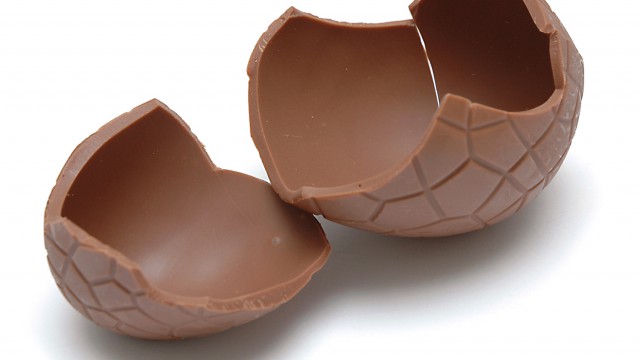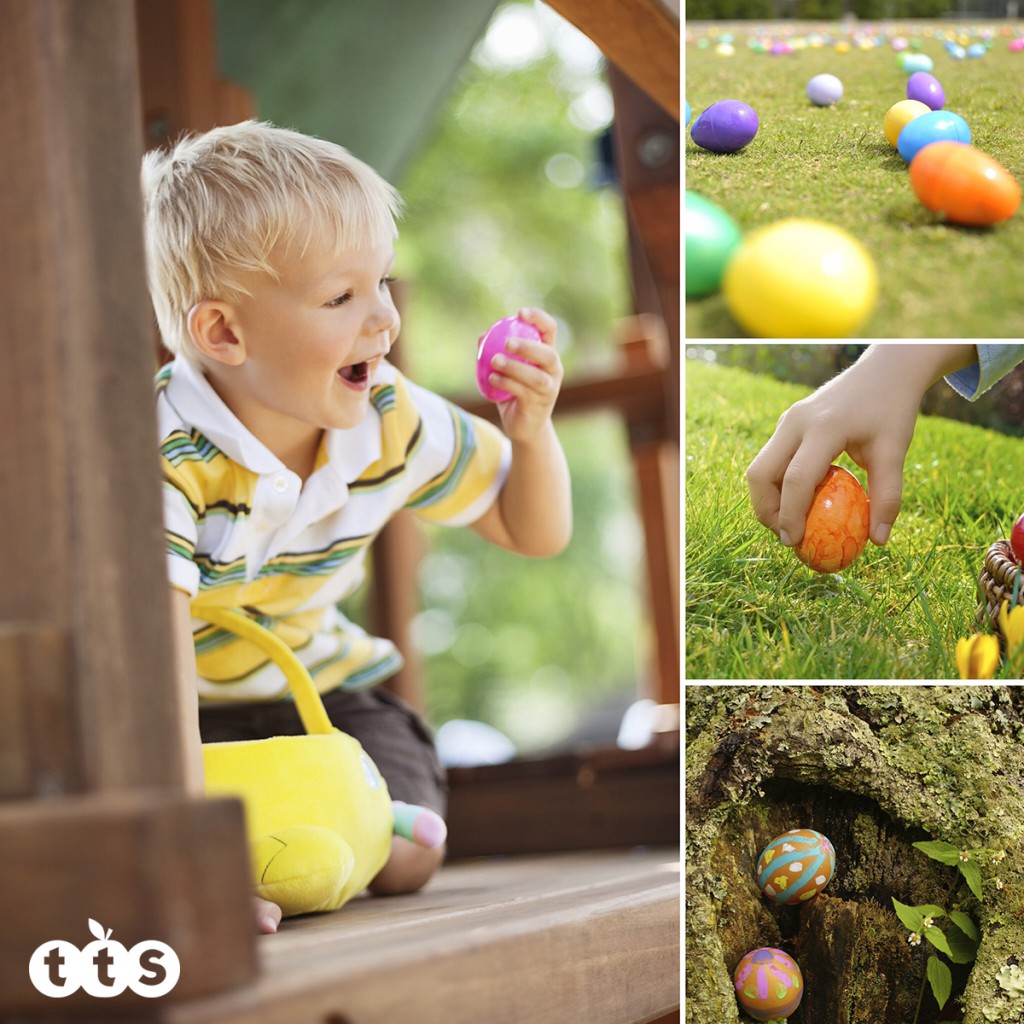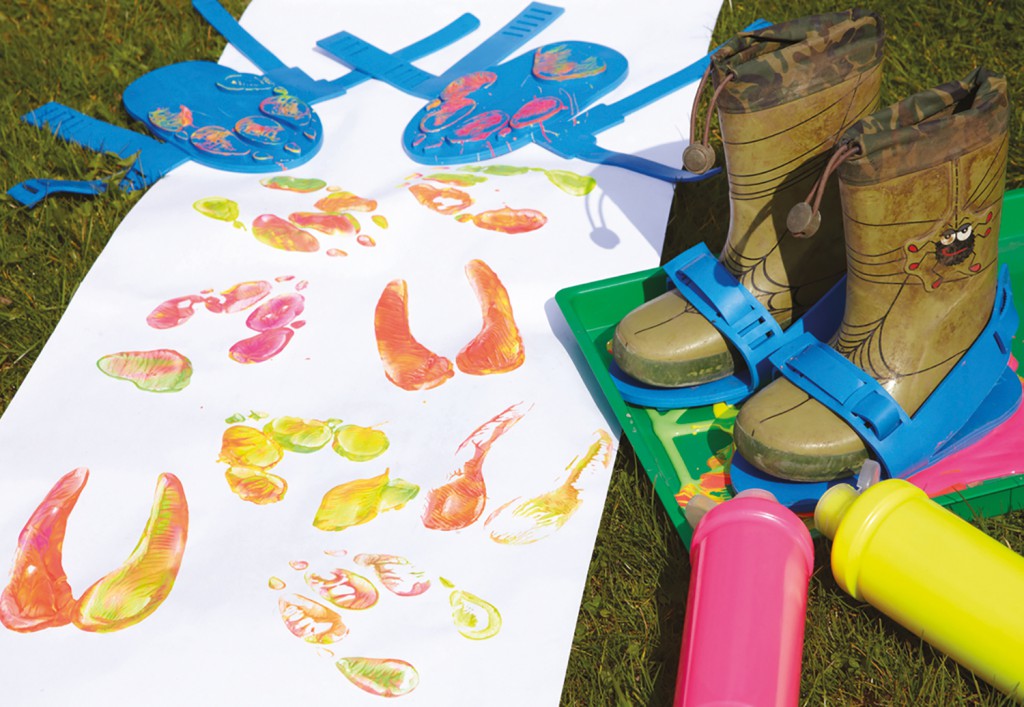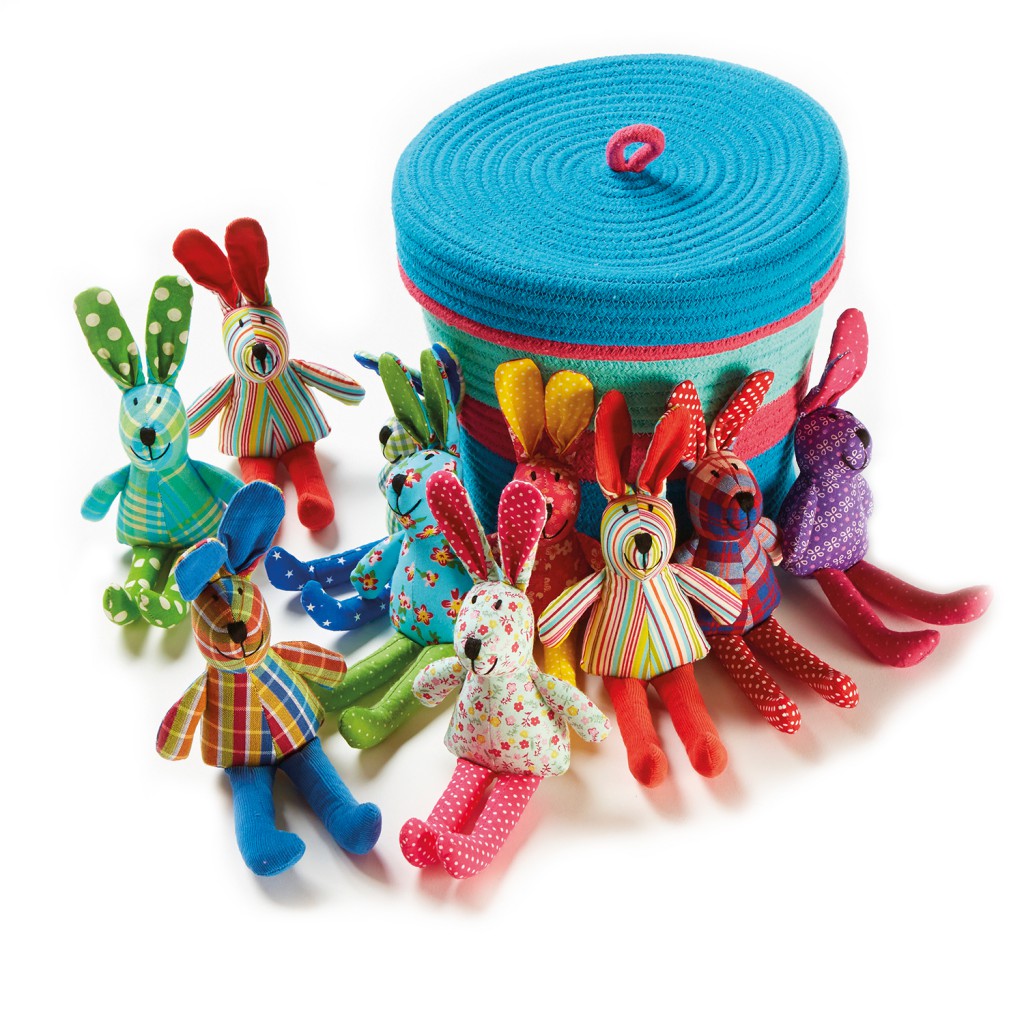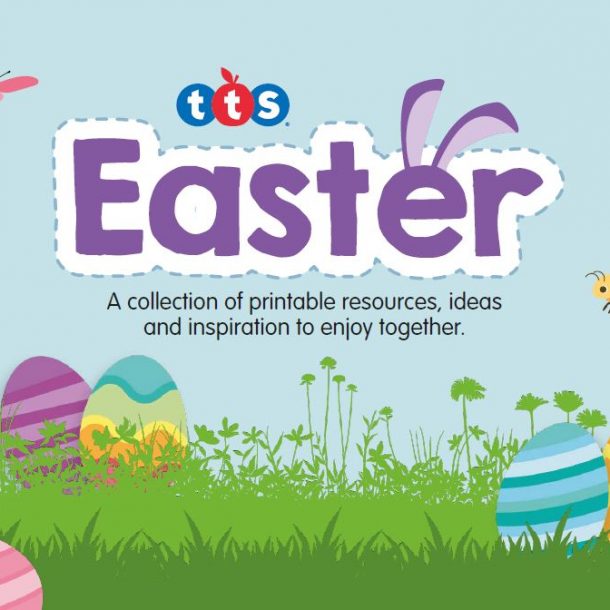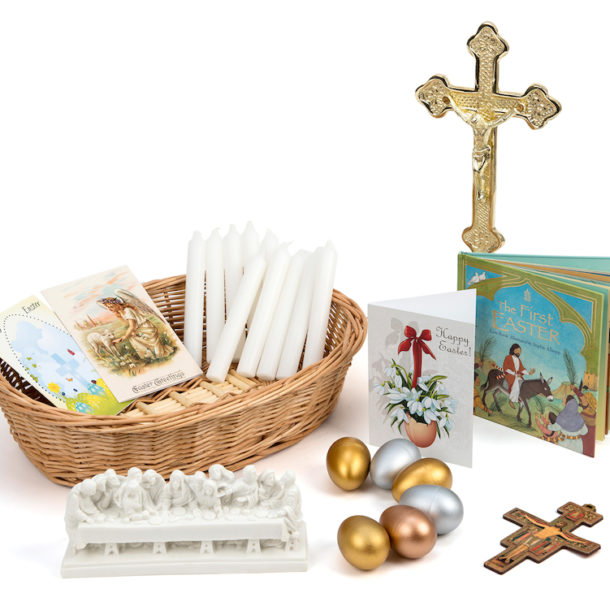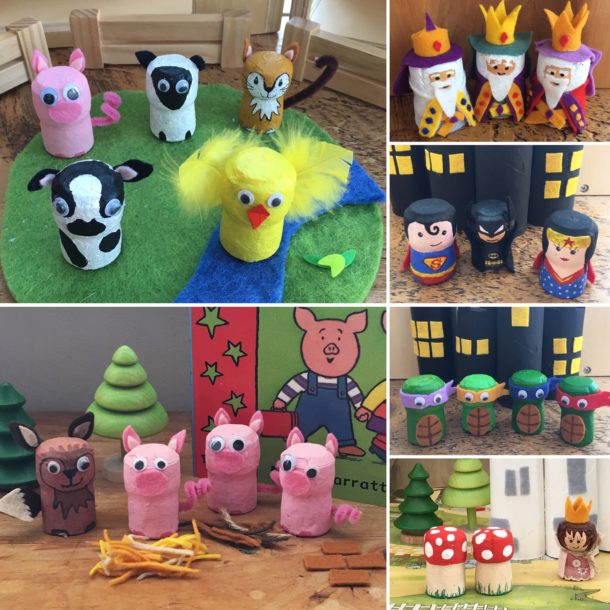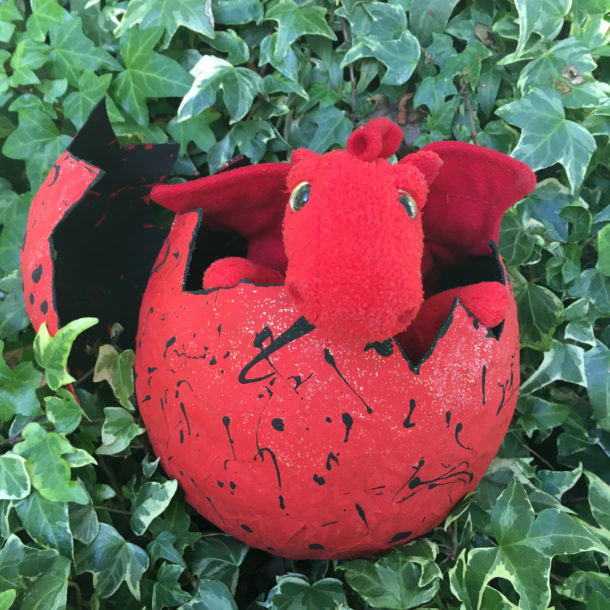1. Link early maths and language to your outdoor Easter egg hunt
Challenge children to find between 1 and 3 easter eggs that you’ve already hidden outside – either real chocolate easter eggs as a lovely treat to eat later, or polystyrene versions that you can decorate. Once all the eggs have been found, gather the children in a circle to discuss how many each has, asking questions such as; ‘how many would you have if you had found ‘one more’ or ‘one less’? Make it more difficult by asking how many they would have if they found ‘two less’ or ‘three more’? If children paired up with a friend, how many eggs would they now have between them? Encourage story telling by mentioning the Easter Bunny, for example, how do they think the eggs got to be where they were found? If the Easter Bunny had 10 eggs and shared them between Sophie and Oliver, how many would they each have? If the eggs are wrapped or decorated, what similarities and differences does each have? There are many rich language and mathematical learning opportunities here!
2. Inspire story-telling and creative writing with animal track foot stampers
If you’re anything like us you’ll be chuckling and having great fun as you create these tracks for children to discover on their arrival at school or nursery. Take a set of stampers through the mud, leave tracks on the paving slabs… or use with paint or flour. What will children discover at the end? Is it a giant Easter egg, or really a Dinosaur egg, ready to crack? Who made the prints? Was it the Easter Bunny, or the Dinosaur who lost his Roar? With a little imagination these foot stampers can provide the basis for many learning opportunities. Use them after Easter to create number patterns, big works of art, and to add excitement and intrigue to nature walks!
3. Celebrate similarities and differences with a Basket of (Easter) Bunnies
What’s better than the Easter Bunny? This charming basket of 10 bunnies! They lend themselves to being cuddled, counted and sorted. The different patterns and textures provide opportunities for children to compare and contrast and to look for similarities and differences – skills fundamental in learning to read and write. See the bunnies in action here:
Read a recent review from the British Association of Professional Nannies.
4. Use these Easter facts to provoke thought and inspire discussion!
- Approximately 90 million Easter eggs are sold in the UK every year.
- On average in the UK, children receive eight chocolate eggs each – ask children if they think this is a lot, and why it might be a good idea to save some!
- Nowadays, most of our Easter eggs are made from chocolate and it is common to give a chocolate egg as a gift. However, Easter eggs have not always been made from chocolate. What else could they be made from?
- Eggs symbolise new life and they have traditionally been given as gifts at Easter, which also coincides with Spring. Discuss why.
- Spring is a time to celebrate new life, which is why the egg is so special – birds lay eggs which hatch and produce beautiful chicks. Ask the children if they have seen an egg hatch, or to tell you about a time when they may have visited a farm. Farms in spring are often a great place to visit to see hatching chicks and new born animals.
